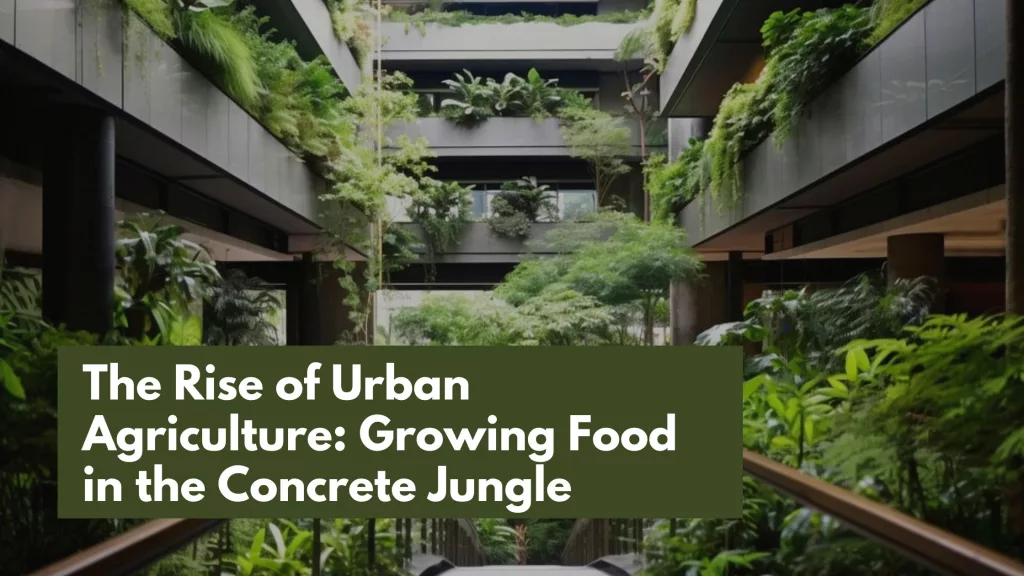Regenerative Agriculture: Farming for a Greener Planet
Regenerative agriculture is a cutting-edge agricultural strategy that has arisen in response to raising environmental concerns and to mitigating climate change. This cutting-edge method seeks to sustainably feed an increasing world population. And also holds the promise of restoring the planet’s ecosystems and halting climate change. We shall examine the idea of regenerative agriculture in this blog article. Further, we will explore the topic along with its guiding principles, advantages, and potential to build a greener, more sustainable world.
Understanding Regenerative Agriculture
Regenerative agriculture is a holistic agricultural method that prioritizes improving and restoring ecosystem function, soil health, and biodiversity. It is far better than traditional farming methods. Because they frequently result in soil degradation, biodiversity loss, and an over-reliance on synthetic inputs. Regenerative agriculture, on the other hand, aims to imitate natural ecological processes to build a resilient and self-sustaining farming system.
This agriculture method is fundamentally concerned with cultivating and enhancing healthy soil. In order to combat climate change, healthy soil functions as a carbon sink, removing carbon dioxide from the atmosphere. This is accomplished via methods that boost soil’s organic matter content, improve soil structure, and encourage advantageous soil microbes.
Principles of Regenerative Agriculture
Regenerative agriculture is based on a number of important principles:
Reduced or no-tillage
Erosion can result from tilling or plowing the soil, which can damage its structure. No-till or low-tillage techniques support soil structure maintenance, erosion control, and carbon storage.
Rotation of crops and cover crops
Between the major agricultural seasons, cover crops like legumes and grasses are produced. They fix nitrogen, shield the soil from erosion, and give beneficial insects a somewhere to live. Crop rotation also promotes soil health by preventing the accumulation of pests and illnesses.
Polyculture and a wide range of plants
Diverse crop planting and the encouragement of polyculture — the co-culture of several crops—improve biodiversity, lower crop failure rates, and boost ecosystem resilience.
Organic Matter and Compost
The structure, water-holding ability, and nutritional content of the soil are all improved by adding compost and organic matter. This encourages the development of a robust population of soil microorganisms that aid in the cycling of nutrients.
Integration of Animals
By dispersing organic matter uniformly and promoting plant development, integrating animals into the farming system, such as rotational grazing, can aid in enhancing soil health.
Windbreaks and agroforestry
In addition to preventing soil erosion, planting trees and erecting windbreaks also expand animal habitats and enhance agricultural microclimates.
Benefits of Regenerative Agriculture
Regenerative agriculture offers a wide range of advantages that go well beyond the farm:
Carbon Sequestration.
Sequestering carbon in the soil is one of regenerative agriculture’s most important contributions. Significant amounts of carbon may be stored in healthy soils, which lower atmospheric carbon dioxide levels.
Protecting Biodiversity
Regenerative agriculture promotes biodiversity by avoiding monocultures and encouraging diversified planting. This encompasses both the diversity of life above ground and the enormous variety of species living in the soil.
Improving Soil Health
The soil structure, water retention, and nutrient availability are all improved by regenerative practices. Healthy soils are more resistant to adverse weather events and require fewer manmade inputs.
Management of Water
Water runoff and soil erosion are reduced by cover crops and better soil structure. As a result, there is greater water infiltration, less chance of flooding, and higher water quality.
Economic Stability
Even though switching to regenerative practices might include upfront expenses, doing so frequently results in lower input costs over time, as well as increased yields and better product quality.
Climate Adjustment
Regenerative agriculture lowers the chance of crop failures during extreme weather events and fosters ecosystems that are resilient to climate change.
The Road Ahead
Although regenerative agriculture presents a potential route to a greener planet, obstacles still stand in the way of its broad implementation. For farmers to make the switch from traditional practices, they need help, information, and training. Research is still being done on scalability and how to evaluate the effects of regenerative practices on a larger scale.
The transition to regenerative agriculture needs the assistance of companies, consumers, and policymakers. The change may be accelerated by policies that reward environmentally friendly agricultural methods, consumer demand for ethically produced commodities, and corporate pledges to procure from regenerative farms.
Conclusion
In conclusion, regenerative agriculture offers a significant chance to fundamentally alter how we think about farming. This practice provides a comprehensive response to the urgent environmental issues we confront by fostering healthy soils, embracing biodiversity, and minimizing climate change. Individuals, communities, and societies must see and support the promise of regenerative agriculture to build a greener, more sustainable world for coming generations as we move forward.


